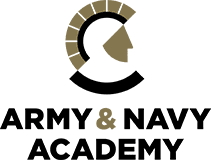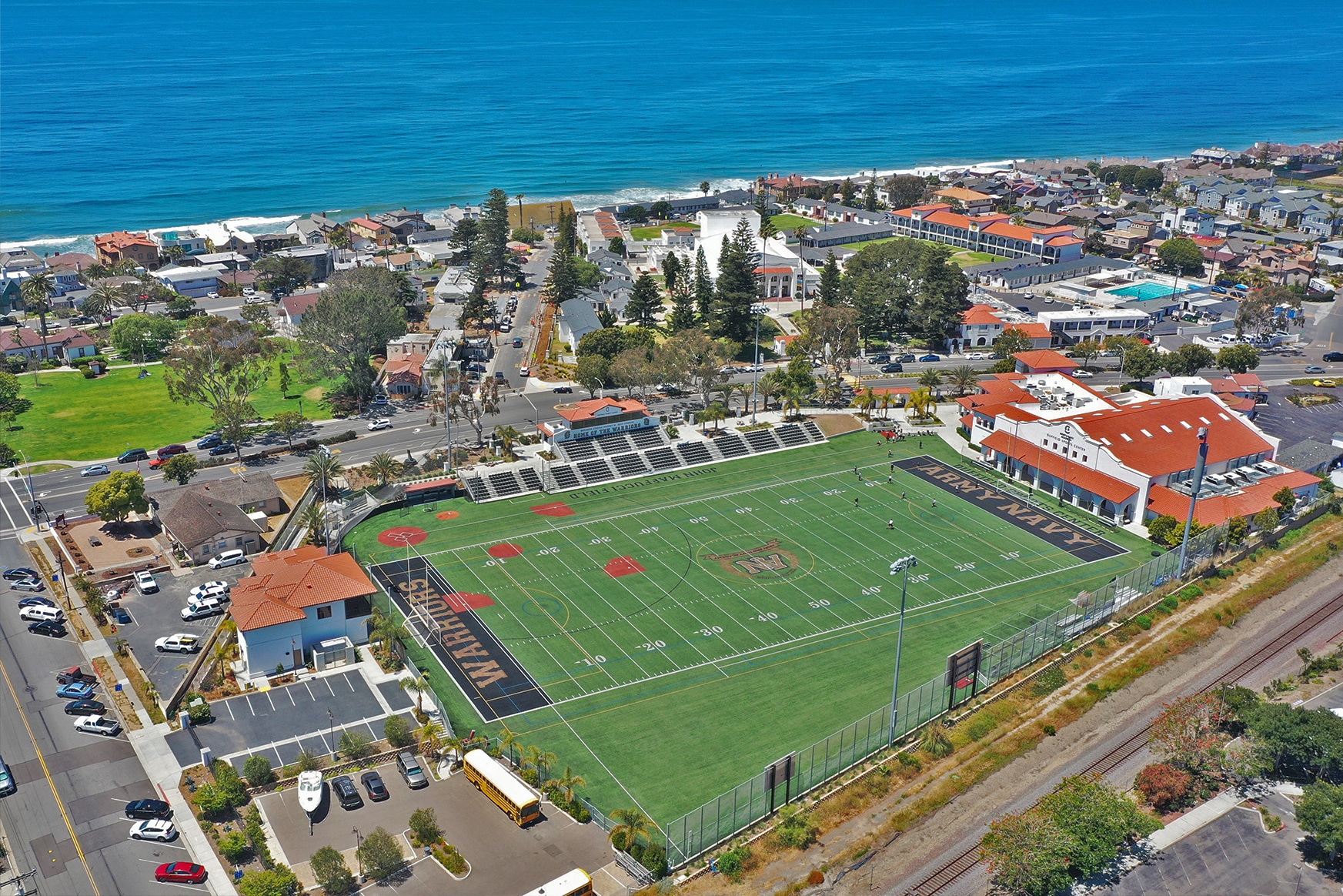Interested in aviation? You can actually learn to fly while you are in high school to get a jump start in this growing field. Military boarding schools, in particular, one in California a offers a stellar aviation program.
“Our cadets who finish this program and go onto to complete a college education in aviation will be equipped to succeed in the aviation industry, no matter where they go.” –Retired Marine Aviator LtCol. Kevin G. Moss, Aviation Instructor, Army and Navy Academy
How do we begin to provide the additional aviation professionals?
For one thing, begin training in high school. The Army and Navy Academy, a college preparatory boarding and day school in Carlsbad, Calif., debuted its Warrior Aviation Course for grades 9-12. Created by the Aircraft Owners and Pilots Association and approved as University of California A-G science electives, the courses connect aviation and aeronautics to Science, Technology, Engineering, Mathematics (STEM) and other core curriculum. In addition to preparing cadets to take the Private Pilot written and flight proficiency exams upon completion of the four-year course, they also receive college credits to help them pursue professional aviation or aeronautics at four-year colleges or university.
Participating “Warrior Aviation” cadets take several “ground school” courses including Aircraft Systems and Anatomy, Aerodynamics, Aircraft Weight and Balance, FAA Regulations, Aeronautical Decision Making and Flight Safety, Medical and Pilot Physiology, and Aviation Navigation.
Then, there’s the fun part of the program; learning how to handle an aircraft while still on the ground. Beginning with a single X-Plane 11 flight simulator, the Academy program’s training equipment list has since expanded to include three Redbird TD Basic Aviation Training Devices that are FAA-approved for both Visual and Instrument Flight training. For those interested in unmanned aircraft, there are four DJI Mavic Pro quad-copter drones to supplement the Aviation III course that prepares cadets to earn the FAA Part 107 Commercial Remote Pilot certification.
Growing Demand for Pilots
The world of travel is changing. Chief among those changes is a growing worldwide shortage of commercial and military pilots. The critical shortfall is due largely to the increasing numbers of aging commercial pilots who are facing mandatory retirement in the next few years.
According to the Federal Aviation Agency (FAA), the number of pilot certificates issued by that agency has decreased by more than 60 percent since 1980. The present- and near-term future doesn’t get any better. A 2019 report from Boeing shows that within the next decade, 42 percent of commercial pilots currently flying for U.S. major airlines will reach their mandatory retirement age of 65. In military aviation, the Department of Defense recently reported a shortfall of nearly 1,300 Naval aviator and other flight officer billets and predicted a shortage of 1,000 Air Force pilots by 2022.
Not only do fewer Air Force pilots and Naval aviators affect military readiness, it also constricts even further the supply of commercial pilots. In the 1980s, roughly two-thirds of airline pilots came from the military. Since then, the percentage is now one-third and, given the predicted shortage of military fliers, the pipeline of ex-military pilots will likely shrink further.
Meanwhile, the International Air Transport Association predicts demand for air travel will double over the next 20 years; a prediction supported in part by the fact that last year alone, Boeing and Airbus delivered more than 1,400 new commercial aircraft to domestic and international airlines combined.
What is needed to cure the pilot deficit
Boeing’s Pilot and Technician Outlook reports that 637,000 new pilots – a number just under the population of Washington, DC — will be needed worldwide by 2036 to not only cure the pilot deficit caused by the perfect storm of large numbers of retiring pilots, but also additional regulations requiring more pilots in order to prevent pilot fatigue as well as the soaring demand for air travel and other growth-related factors. In the U.S. alone, 70 new pilots a day will shortly need to be added to meet the present and near-term demands facing the commercial aviation industry.
More about how aviation interacts with the STEM curriculum
There’s much more to a robust aviation education than training exercises in a flight simulator or later, flying solo in a cockpit. A college preparatory aviation- or aeronautics-based education includes a hands-on approach to learning and mastering STEM topics as well. In an article, “Understanding STEM Education through Aviation,” Redbird Flight Simulators, a Texas-based flight training company, gives the following examples of how present and future pilots and other aviation professionals uses science, technology, engineering and mathematics principles.
- SCIENCE: Weather is an important scientific topic academically as well as for aspiring pilots who need to learn and apply the science behind it. Aviation courses teach the importance of paying attention to what weather looks like now, what is or will be changing and how that may affect flight factors.
- TECHNOLOGY: The advanced technology in today’s aircraft is outstanding; however, with the abundance of technology at a pilot’s fingertips, there is the need to ensure that the pilot understands how to use and operate it correctly.
- ENGINEERING (and Physics): Since there are so many different types of aircraft in today’s skies as well as continuing changes in aircraft design, pilots need to learn the stability and performance characteristics of those aircraft.
- MATH: Being able to calculate the accurate weight and balance and finding the center of gravity of an airplane is very important for ensuring that the aircraft is within acceptable limits. Weight and balance calculations become even more challenging, knowing that as an airplane burns fuel in flight, those calculations change.
Top-rated colleges and universities for aviation courses
Many comprehensive colleges and universities offer some level of courses or degrees in aviation, aeronautics or, in some cases, aerospace engineering. However, among the many lists that rank institutions of higher learning for various attributes, thebestcolleges.org lists its top picks for aviation degrees. Some of the colleges chosen by Army and Navy Academy Graduates include many on this list.
- Purdue University
- University of North Dakota
- Ohio State University
- San Jose State University
- Embry-Riddle Aeronautical University
- Academy College
- Hallmark University
- Spartan College of Aeronautics and Technology
- Rio Salado College
- L3Harris Flight Academy
- Questions? Feel free to contact us. Our admission staff is standing by to help you learn about our private school and our aviation program. Beyond this program, students receive a college prep education, leadership training, and character development, all geared to help boys achieve in college and beyond. Aim high and learn to fly in high school!

Candace Heidenrich is the CEO of Aperture Advisory Associates, where she works with private secondary and higher education leaders to strengthen programs and practices. She founded Aperture in 2018 after more than a decade in a senior administrative role at a boarding school in California. Additionally, she held faculty and chair positions at private schools and colleges in Los Angeles and Ojai. Her background also includes director and executive level positions with start-ups and Fortune 500 corporations.
While earning her B.A. in Education and Humanities in the Lawrence Henry Gipson Scholar program, she studied abroad at Oxford before pursuing her master’s at the University of California, Santa Barbara. A frequent speaker at national conferences, she is a recognized thought leader and authority on enrollment management and marketing best practices.
